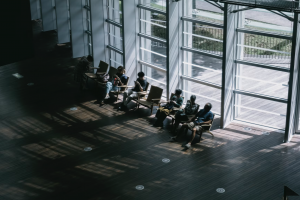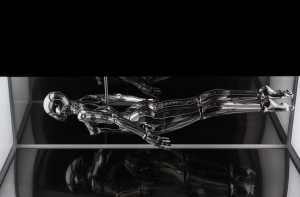What does it mean to work? To be productive? The answer to that question has been subject to radical change over the last centuries and decades. For much of history, work was mainly physical in nature. It meant you spent a significant part of your working day moving and interacting with a material reality. If we fast forward to today, much is different. Many modern professions require you to spend your working days in front of computers. Sitting still behind your laptop constitutes productivity. We have to remind ourselves to get up and walk around for a bit because otherwise we don’t.
This new way of working also means we get tired in different ways. Instead of straining our body, we strain our minds. We get less hernias and more burn-outs. When we wanted to avoid the physical toll our bodies take during long and tough careers, there were ways to protect workers: utilizing proper lifting technique (lift with your legs, not your back), union rules to keep physical load within reasonable limits, etc.
In Europe, mental health problems are the leading cause of sick leave. According to the European Agency for Safety and Health at Work, over 50% of all lost working days are related to work-related stress and mental health issues. So what do we do now that our work is so different and mental absenteeism has skyrocketed in the last decade? Now that our work requires sharp minds to navigate complex problems, uncertainty and change. If anything, we need to equip ourselves with the proper techniques of dealing with the mental weight of what we have to process day to day: we need resilience.
But resilience is a term that is just about broad enough to incorporate almost anything positive about mental wellbeing. There have been countless studies done on how to boost resilience, and even within research there are dozens of different definitions of resilience. But generally speaking, resilience is the ability to bounce back after adversity. When we speak of resilience in the workplace, we can divide three neat streams that companies and/or employees can utilize to boost employee resilience.
The first one is helping people boost their mental resilience. To recover – or even grow – from adversity it’s important to learn some essential traits like emotional regulation (managing your emotions without being controlled by them) or self-efficacy (the belief in our ability to accomplish our goals). These traits and more are discussed in the book Tomorrowmind that dives into research-backed skills that are essential for the modern working world.
The second booster to resilience is physical. Obviously working out and adopting a healthy lifestyle helps boost resilience but it’s more than that. We’re increasingly disconnected from our bodies, often experiencing them as a passive bystander to our brain, that does the actual work. But to become more resilient it’s important to feel connected with our body; it allows us to signal stress early in your body and allows us to slow down and manage our schedule and workload before the strain on our mind becomes too large to ignore. An example is this low-threshold exercise by headspace that guides you to do a quick check-in with your body.
Finally, what can make a significant difference as well is the social environment. Research has found a range of direct and indirect factors that influence worker resilience. It’s often a misconception that comfortable environments lead to more resilience. After all, without discomfort there is no adversity (that is required for resilience) to bounce back or grow from. So discomfort is good, as long as there is also sufficient support to handle said discomfort. Examples of such support are: psychological safety, clear task definitions, autonomy in roles, or constructive feedback mechanisms.
To conclude, mental absenteeism is a huge problem for many companies, especially if the work is complex and stressful, the days long and tiring. But there is plenty that modern corporations can do to boost and support their employees. Not just to handle the workload, but also to grow as professionals and people.

Author
Douwe Knijff
Share the signal.











